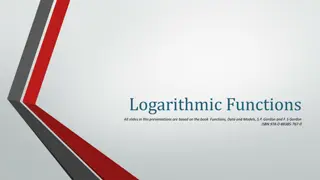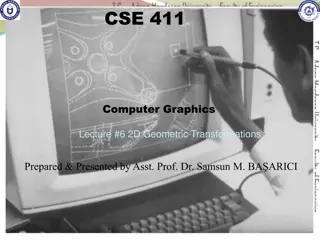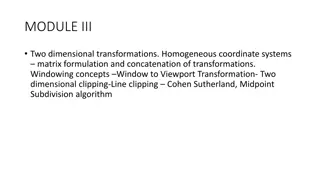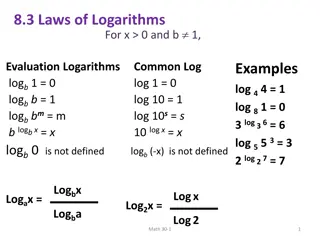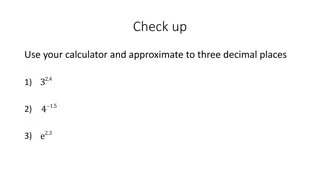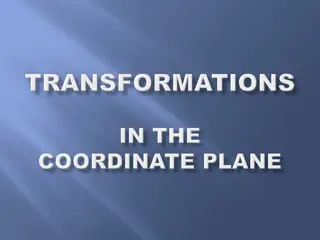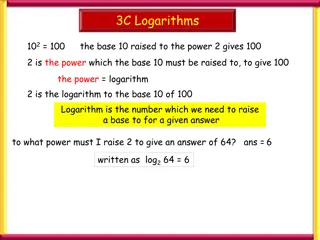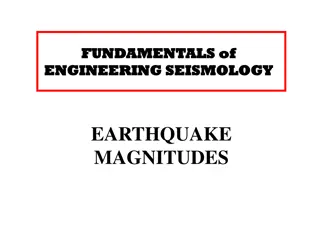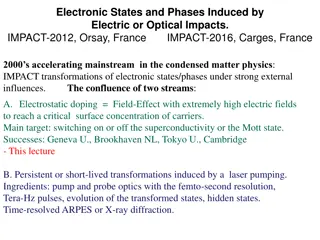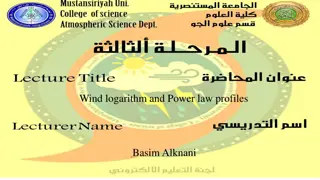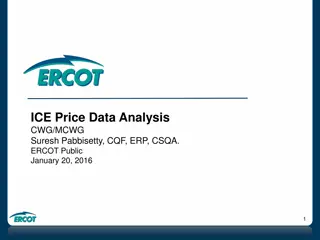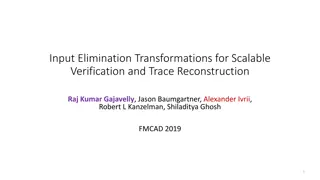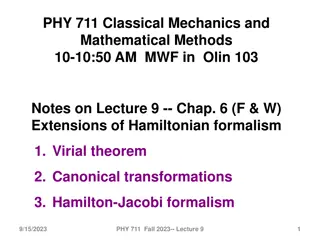Understanding Logarithmic Function Transformations
Explore transformations of logarithmic functions through examples involving vertical and horizontal stretches, translations, and reflections. Understand how to sketch the graphs of logarithmic functions and determine missing coordinates on the graphs. Additionally, learn about transformations such as horizontal stretch, translation, and vertical translation on logarithmic functions. Dive into identifying missing coordinates and describing transformations through examples in the context of logarithmic functions.
Download Presentation

Please find below an Image/Link to download the presentation.
The content on the website is provided AS IS for your information and personal use only. It may not be sold, licensed, or shared on other websites without obtaining consent from the author. Download presentation by click this link. If you encounter any issues during the download, it is possible that the publisher has removed the file from their server.
E N D
Presentation Transcript
8.2 Transformations of Logarithmic Functions Exponent Exponent Exponential Form: by = x. Logarithmic form: y = logb x Base Base y = x f (x) = 2x 6 5 4 3 f (x) = log2x 2 -2 -1 2 3 4 5 6 -1 -2 Math 30-1 1
( ) Logarithmic Transformations = + Logarithmic Transformations log ( y a b x h k c Parameter Description of Transformation Mapping Notation Vertical stretch by a factor of |a| (x, y) (x, ay) a 1 x Horizontal stretch by a factor of (x, y) b , y | | b | | b Horizontal translation right, h > 0 left, h < 0 (x, y) (x + h, y) h Vertical translation up, k > 0 down, k < 0 (x, y) (x, y + k) k Key Points from basic graph to transform include: x-intercept (1, 0) Reflections??? vertical asymptote x = 0 Math 30-1 2
( ) Sketching Graph of Logarithms = + log ( y a b x h k c y = logx y = log5x y = log(x 2) Do: x x 0,x Do: x x 0,x Do: x x 2,x Ra : y y Ra : y y Ra : y y Vertical asymptote x = 0 Vertical asymptote x = 0 Vertical asymptote x = 2 x-intercept at 1 x-intercept at 1 x-intercept at 3 Math 30-1 3
Determine the value of the missing coordinate. The point (32, b) is on the graph of y = log2x b = 5 b = log 32 2 The point (a, 3) is on the graph of y = log3x a = 27 = 3 log x 3 ( ) The point (a, 4) is on the graph of y = log2x +1 4 log x = ( ) 16,4 a = 15 2 1 3 ( ) = 2log 4 1 y x The point (19, b) is on the graph of 5 1 3 b = -3 ( ) = 19 4 2log 1 y 5 Math 30-1 4
Describe the transformations on the graph of y = log2x to become y = log25(x + 2) ( )+ 3 Horizontal stretch by a factor of 1/5 Horizontal translation of 2 units left Vertical translation of 3 units up 9 ( ) 1,0 5,3 x = 2 The Vertical Asymptote , x = 0 translates to | 2, x x x The domain of the image graph is Math 30-1 5
The graph of y = log x is transformed into the graph of y + 3 = log(x - 6) by a translation of 6 units __i__ and 3 units _ii_. The statement above is completed by the information in row Row i ii A right up B left up C right down D left down For the graph of , where 0 < b < 1, the domain is log (4 20) b y x = + ( ) ( log 4 5 b y x = + ) | 5, x x x Math 30-1 6
The red graph can be generated by stretching the blue graph of y = log4x. Write the equation that describes the red graph. y = log4 4x The red graph can be generated by stretching and reflecting the graph of y = log4x. Write the equation that describes the red graph. y = -3log4x Math 30-1 7
The solid graph can be generated by translating the dashed graph of y = log4x. Write the equation that describes the solid graph. y = log4 (x)+1 The graph of y = log2x has been vertically stretched about the x-axis by a factor of 3 , horizontally stretched about the y-axis by a factor of 1/5 , reflected in the x-axis, and translated of 7 units left and 2 units up. Write the equation of the transformed function in the form y = a log2 (b(x - h) + k. y = -3 log2 (5(x + 7) + 2 Math 30-1 8
Assignment Page 389 1, 2, 4a,c, 5b,d, 6a,c, 7, 8b, 9, 10, 13, 14, 16a Math 30-1 9




